Operating principle of the washing machine pressure switch
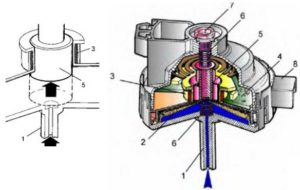 When problems arise with a washing machine, many housewives cannot even imagine what the problem might be, since they have a vague idea of the contents of their washing machine. Meanwhile, you need to at least roughly know the structure and functions of the main parts, without which the operation of the unit is impossible. For example, do you know the principle of operation of a pressure switch and what it even is?
When problems arise with a washing machine, many housewives cannot even imagine what the problem might be, since they have a vague idea of the contents of their washing machine. Meanwhile, you need to at least roughly know the structure and functions of the main parts, without which the operation of the unit is impossible. For example, do you know the principle of operation of a pressure switch and what it even is?
What is it for and how does it work?
As you might have guessed from the name of the part, its functionality is related to pressure. Have you ever wondered how the main module (which gives orders to all the parts) “understands” what exactly needs to be done? For example, what signals to him that there is enough water in the tank and he needs to either stop filling or drain the already used water? For such purposes there is a pressure switch. It is involved in the washing process from start to finish, and it really would be impossible to do without it.
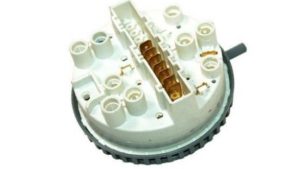 The fact is that each program requires a different amount of water. The pressure switch is programmed for these values and as soon as the required volume appears in the drum, it gives the control module a signal to stop supplying. Even during the spin cycle, the pressure switch clearly controls the amount of water released from the wrung out items and gives the pump a signal to pump it out. Thus, after opening the drum, things lie wrung out, and the water already leaves.
The fact is that each program requires a different amount of water. The pressure switch is programmed for these values and as soon as the required volume appears in the drum, it gives the control module a signal to stop supplying. Even during the spin cycle, the pressure switch clearly controls the amount of water released from the wrung out items and gives the pump a signal to pump it out. Thus, after opening the drum, things lie wrung out, and the water already leaves.
The device itself is a round part with a plastic body, to which a hose and wiring are attached. What does this part do? Inside there is a membrane and a switch. The action occurs as follows. The pressure in the drum is determined by the volume of water.Air enters the pressure switch through the hose and presses on the membrane. Since the membrane is a flexible part, it bends under pressure and presses the switch. That, in turn, sends a signal to the module through the wiring.
To detect the pressure switch, just open the top cover of the washing machine. The device will be located near one of the side walls (on the left or on the right - depending on the manufacturer).
What parts does it consist of?
First, let's figure out what the part consists of. This is necessary for a better understanding of the principle of its operation.
- Compression chamber. This is the base of the connecting hose that connects it to the pressure switch. It tends to get clogged, which causes errors and then problems with pumping water.
- Sensors This is where the membrane is located. The sensor converts the pressure created by a column of liquid into kilohertz (which measures frequency fluctuations).
- Magnet or ferrite core.
- Spring.
- Diaphragm. Otherwise, it’s the same membrane that bends under air pressure and presses the switch.
- Coil, capacitors and printed circuit board. These are auxiliary elements that are not directly involved in the signal supply, but support the viability of other parts and contacts.
- The adjusting screw and the housing itself, inside or next to which the main elements of the device are located.
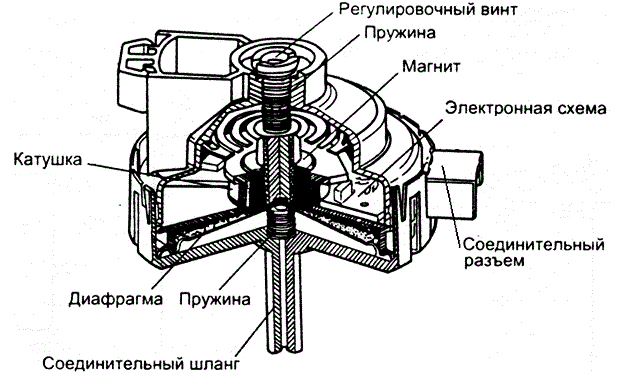
The pressure switch works as follows: when air moves inward through the hose, the membrane presses on the magnet (core) of the oscillating circuit. And as a result of this, the oscillation frequency of the generator changes. The height of the core position under pressure changes, and these changes are read by the adjusting screw.
Important! Programming the volume of water in the pressure switch occurs precisely using the oscillation frequency values.
For example, when the tank is empty the value is highest, and when the tank is full it is lowest. There is also an input port, which is the main concentration of programmed data. It is located at the very edge of the housing and intersects with the connecting hose. The inlet fitting precisely reads the oscillation frequency and, based on the data stored in it, determines how much water has entered the tank. The higher the volume, the lower the frequency. As soon as it reaches the minimum permissible value, the pressure switch generator is triggered and sends a signal through the wiring to the main module.
This is how this important washing machine sensor works. By the way, the level sensor of the washing machine is set at the factory, but sometimes these settings are lost and have to be restored.
Interesting:
1 reader comment
Add a comment Cancel reply
Categories
Washing machine repair


For buyers

For users

Dishwasher



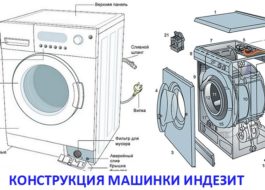
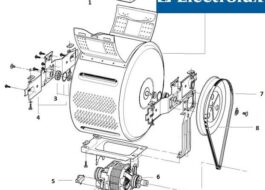
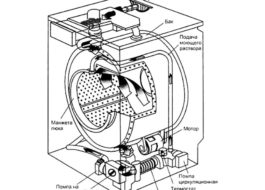











Simple, intelligible.
Thank you very much!